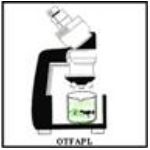AGLS 6502 Lecture 2 - The Animal Kingdom and Livestock
This unit introduces you to the Animal Kingdom and to the different types of Livestock and identifies the roles which they perform for humanity.
This unit is thus divided into four (4) sessions as follows:
- An Introduction to the Animal Kingdom
- Categories of Livestock, The Differences between Ruminant and Non-ruminant Livestock and the Roles and Functions of Ruminants to Mankind
- To get a brief understanding of the term “Development”
- To get a brief understanding of the term “ Livestock Development”
After working through this unit, you should be able to:
- describe the Animal Kingdom
- to identify the different categories of livestock which exist;
- understand the differences between them;
- appreciate the concept of development from an economic and societal standpoint;
- link in a practical way, the concept of development to the livestock production milieu;
- appreciate of the opportunities that livestock development presents to the overall development of a small country or state; and
- explain fully what is meant by “Livestock Development”.
2.2 An Introduction to the Animal Kingdom
The Animal Kingdom is made up of over a million unicellular (e.g. Amoebae) and multicellular animals (like large mammals). The Kingdom is grouped into 35 Phyla; the majority being invertebrates (animals without backbones) while only one per cent (1%) are vertebrates (animals with backbones). The major groupings in the Animal kingdom are listed in Box 2.1 below.
As we can see, those animals with which we are most familiar would fall under the Phylum: Chordata [this includes mammals, reptiles and birds].
Box 2.1. The major groupings within the Animal Kingdom
INVERTEBRATES:
Unicellular [Single Cells]
Bacteria and Protozoans
Multicellular
Parazoa
Phylum: Porifera [Sponges]
Phylum: Mesozoa
Phylum: Coelenterata [True jelly fish, corals and sea anemones]
Phylum: Ctenophora [Comb jellies]
Phylum: Platyhelminthes [Flatworms]
Phylum: Nemertina or Rynchocoela [Ribbon worms]
Phylum: Nematoda [Roundworms]
Phylum: Nematomorpha
Phylum: Acanthocephala [Spiny-headed worms]
Phylum: Kinorhyncha
Phylum: Rotifera [Wheel animalcules]
Phylum: Endoprocta [Moss animal]
Phylum: Lorcifera
Phylum: Phoronida
Phylum: Ectoprocta or Bryozoa [Moss animal]
Phylum: Brachiopoda [Lampshells]
Phylum: Mollusca [Mollusks]
Phylum: Annelida [Annelids]
Phylum: Sipuncula [Peanut worms]
Phylum: Chaetognatha (Arrow worms)
Phylum: Echinodermata (Echinoderms)
Class: Crinoidea (Feather Stars)
Class: Asteropidea (Sea Stars)
Class: Ophiuroidea (Brittle Stars)
Class: Echinoidea (Sea Urchins)
Class: Holothuroidae (Sea Cucumbers)
Phylum: Hemichordata (Acorn Worms)
Multicellular Animals with Exo-skeletons
Phylum: Arthropoda [Animals with exo-skeletons]
Class: Arachnids
Class: Crustaceans
Class: Insecta
VERTEBRATES:
Multicellular animals with Bony Internal Skeletons and a Central Nervous Systems or Spinal Columns
Phylum: Chordata
Class: Agnatha (Jawless Fish)
Class: Chondrichthyes (Cartiligenous Fish)
Class: Osteichtyes (Bony Fish)
Class: Amphibia (Salamander, Toads and Frogs)
Class: Reptilia (Turtles, Lizards and Crocodiles)
Class: Aves (Birds, warm blooded)
Class: Mammalia (Mammals, warm blooded)
Reading 2.1
Now read Reading 2.1, Anon (1997) Microsoft Encarta’ 98 Encyclopedia. This reading explains each phylum and their characteristics
2.3 An Introduction into Livestock
Now that you have an outline of the different animal species which comprise the Animal Kingdom, let us move a step further and use this newly-found knowledge to explore the term “Livestock”. This term has its origin in the concept of "live animals being stored on the hoof ". Therefore, the concept of animals as stock took root. However, for the purpose of this course we shall attempt to view Livestock as ‘all animals’- thereby including vertebrates and invertebrates that could be of economic or functional use to human beings. Livestock can be grouped into three (3) categories as follows:
- Domestic animals;
- Animals with the Potential for or are in the process of Domestication and Production under controlled systems, to facilitate predictable outputs for marketing purposes; and
- Zoo/Wild Animals.
These categories are illustrated in Box 2.2 below.
Box 2.2. The Categories of Livestock
1. Domestic Animals
a. Food Animals
i. Large Food Animals
o Dairy Cattle (Bos taurus) - meat, milk, hides and energy
o Beef cattle (Bos sp.) - meat, hides and energy
o Water buffalo (Bubalus bubalis) - milk, meat, work, hides and energy
ii. Small Food animals
o Rabbits (Leporidae family) - meat, skins and furs
o Pigs (Sus scrofa domesticus) - meat, skin, fat
o Chickens (Gallus domesticus) [broilers, layers, broiler breeders, layer breeders] - eggs, meat
o Turkeys (Meleagris gallopavo) - meat, feathers
o Ostrich (Strutus australis) (S. carmelus) - meat, feathers, skins
o Ducks common (Anas platyrhychos) - meat
o Muscovy Ducks (Cairiana moschata) - meat
o Geese (Anser anser) - meat, feathers, companion animal
o Sheep (Ovis aries) - hair type, meat (tropical hair sheep) - wool type, milking sheep, meat type (temperate wool sheep)
iii. Dual or multi-purpose animals
o Goats (Capra hircus) - meat and milk production, dual purpose
b. Companion and Recreational Animals
o Horse (Equus caballus) - riding, racing, driving, draft power, companion
o Asses (Equus asinus) - riding, driving, draft power
o Dogs (Canis familiaris) - protection, companion, racing, work
o Domestic Cats (Felis catus) - companion
o Camels Old World - riding, racing, draft power, milk and meat production
- (Single Hump) (Camelus dromedarius)
- (Two Humped) (C. bactrianus)
o Llamoids or New World Camelidae - riding, racing, draft power, milk and meat production, wool, hides
Camels New World
- Llama (Llama glama)
- Apalaca (L. pacos)
c. Laboratory Animals
o Non-human primates (12 families)
o Guinea pigs (Cavia porcellus) - meat, skins, experimental animals
o Hamsters (Cricetus cricetus)
2. Animals With The Potential For Or Are In The Process Of Domestication And Production Under Controlled Systems To Facilitate Predictable Outputs For Marketing Purposes.
a. Mammals
o Capybara (Hydrochaeris hydrochaeris) - meat
o Black-eared Opposum (Didelphis marsuialis) - meat
o Spotted paca or Lappe (Agouti paca) - meat, hide
o Deer (Cervidae family) - meat, hide
o Collared Peccary or Quenk (Tayassu tajacu) - meat
o Nutria (Myocastor coypus) - meat and hide
o Wild Llamoids - meat and milk, hide, draught power, riding, racing, wool
- Guanaco (L. guanicoe)
- Vicuna (Vicugna vicugna)
o Nine banded Armadillo or Tattoo (Dasypus novemcinctus) - meat
o Agouti (Dasyprostya leporina) - meat
b. Birds
o Cocrico (Ortalis ruficauda) - feathers, meat
o Emu (Dromiidae family) - feathers, meat, hide
o Rhea (Rheidae family) - feathers, meat, hide
o Kiwi (Apterygidae family) - feathers, meat
c. Reptiles
o Snakes - skin, meat, eggs, gall bladder, oil
o Alligator, Crocodile and Spectacled Caiman (Caiman crocodilus) - meat, skin
o Iguana (Iguana iguana) - meat, companion
o River turtle (Podocenemis expansa) - meat, eggs, shell
o Morocoy (Geochelene spp.) - meat, eggs, shell, companion
3. Zoo/ Wild Animals
All Undomesticated Vertebrates and Invertebrates
These animals can further be classified into two broad categories based on the nature of their digestive systems and the type of feed resources which are required for them to live and reproduce.
These two categories are as follows:
Ruminants
all foregut fermentors i.e. all animals in which microbial or symbiotic microbial digestion of ingested feed takes place in the stomach compartment or compartments preceding the glandular stomach.
Non-Ruminants
strict monogastrics or single-stomached animals, and hindgut fermentors, animals in which microbial or symbiotic microbial digestion takes place in the cecum, which opens into the large intestine.
This type of classification has implications for feeding and land use, and as such it can be manipulated for economic purposes. This is so as feed costs (or the cost of feeding animals) make up about 75% of the total variable costs of production under intensive systems of production of domestic livestock.
2.3.1 You may be wondering, what are ruminants and non-ruminants?
Ruminants, from an anatomical standpoint, are animals which have four (4) stomach compartments. Their digestive biochemistry (the chemical processes which take place in their stomachs during the digestion of the feeds eaten) is characterized by the digestion of fibre by microscopic organisms (single-celled protozoans) living within the first three (3) non-glandular stomachs. This type of digestive system is found in Cattle, Sheep, Goats, Camels, Llamas, Deer, Giraffes and Antelopes. The schematics of the digestive system of ruminants is outlined in Figure 2.1.
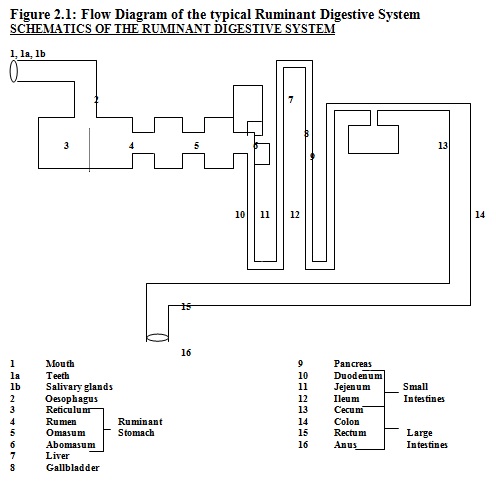
Note: To truly understand the functions of the various organs that comprises the digestive system of ruminants, you may refer to the glossary of terms in the Tutorial webpage.
Reading 2.2
Now read Reading 2.2, by Church, D.C. (1983) which describes the importance of ruminants and their systematic classification.
People, to satisfy both their economic and social needs, have traditionally utilized ruminants. This possibility stems in part, from the digestive abilities of ruminant animals where they can utilize certain materials which neither human beings nor mono-gastrics can.
- Their digestive system allows them to convert fibre and structural carbohydrates [like cellulose], into food and animal products such as meat, milk, hair and wool. These fibres and carbohydrates come from forages (special crops such as grasses which are used as ruminant animals’ feed), crop residues and waste. So in effect when a crop like corn is harvested, what is left does not need to be discarded.
- Additionally, ruminants can convert inorganic nitrogen (in the form of non-protein nitrogen such as urea and sulphate of ammonia) into animal protein – the meat produced from them.
- Now, since the nitrogen is not digested completely, the waste that ruminants produce would contain some percentage of these elements. In most cases this waste is in the form of manure, which can then be used in one of two ways as:
(i) a source of energy, e.g. in Biogas production as methane (CH3) produced from the anaerobic fermentation of the excreta; and
(ii) as organic fertilizer for food crop production.
- Another way ruminants (e.g., Oxen, Bison, Buffalo, Buffalypso, Zebu and Llama) can be used, is in the transport of goods and people; as draught power for plowing fields where mechanized means are not appropriate.
From a financial and economic standpoint, many ruminants, due to the fact that they can be reared on a commercial scale, provide a source of revenue for the producers. Many of the operations are quite large (so as to arrive at some balance between what is expended for production and what is received as revenue), so more than one person is needed to run the operation smoothly. This then provides an avenue for employment for many persons.
Non-ruminants, on the other hand, possess stomachs that are relatively simple in structure. This group can be subdivided according to the functioning of the caecum and colon.
Nonfunctional cecum digestive systems:
This first group is characterized by its limited capacity and limited microbial action for fibre digestion. Animals found here, are better adapted to using concentrate feeds, such as grains and meat products, than utilizing large quantities of roughages or forages. This type of gastro-intestinal tract is found in pigs, dogs, aquatic species and man.
The other group has a Functional cecum digestive system (non-ruminant herbivore):
This type of digestive system – as represented in the horse, rabbit, guinea pig and hamster – the cecum and colon are extremely large and contain a large population of micro-organisms which are capable of digesting fibre as well as synthesizing a number of vitamins.
The schematics of the digestive systems of some selected non-ruminants are outlined in Figure 2.2.

Although avian species are non-ruminants their digestive system differs from all other non-ruminant species. In addition, to a functional ceca and colon, their digestive system contains a crop, proventriculus, gizzard and cloaca. The functions of these organs will be explained in the glossary.
The schematics of the digestive systems of avians are outlined in Figure 2.3.
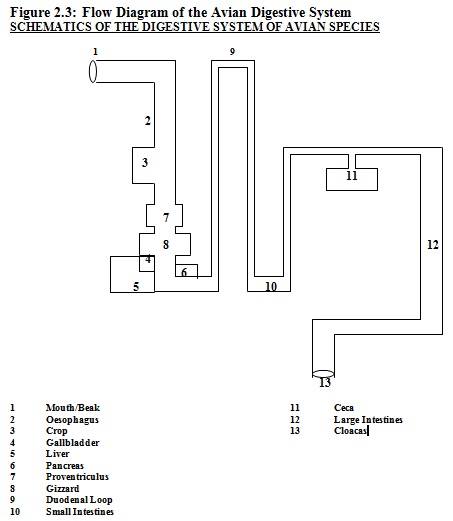
Note: To truly understand the functions of the various organs that comprises the digestive system of mono-gastrics, you may refer to the glossary of terms in the Tutorial webpage.
2.3.1.4 The Differences between Ruminant and Non-Ruminant Livestock
Ruminant and non-ruminant livestock also vary considerably, based on their physical attributes, and their economic and social values. These are outlined in Table 2.1.
Table 2.1: The Differences between Domestic Ruminant and Non-ruminant Livestock
| Ruminants | Non-ruminants |
| Physical Attributes | |
| Generally Long-lived ( more than 5 years) | Short-lived |
| Less specialised breeds genetically hardy | Often specialist breed, genetically delicate, this is especially so with poultry |
| Long breeding cycles | Short breeding cycles |
| Single and twin offspring produced | Large litters of offspring produced |
| Grazers and browsers – can use fibrous feeds, pasture and rangeland | Prefer grains, by-products, wastes |
| Relative high Feed Conversion Ratios (FCRs) | Relatively low FCRs |
| Economic Value | |
| Can produce a range of products, e.g., meat, milk, hides/wool, etc. Only animals which produce milk in commercially viable quantities |
Often a single product obtained |
| Source of draught power | Not draught animals |
| Sometimes closely integrated with cropping Draught power Manure valuable Consume by-products |
Less integration with cropping no draught power manure is also valuable Valuable by-products available |
| May compete with humans for grains | Often compete with humans for grains |
| Can compete with crops for land | Rarely occupy much land |
| Social Value | |
| Occupy land, access can be politically sensitive | Rarely political, more ‘technical’ |
Source: “Livestock Development”, External Programme in Agriculture, 1998. UWI/Wye Link.
Feed Conversion Ratio (FCR) = Kg Feed/ Kg Average Daily Gain (ADG)
2.4 Describing Development from an Economic and Societal Perspective
The definition for Development as given by the Webster Dictionary is as follows:
The act or process of developing; unfolding;... a gradual growth or advancement through progressive changes; the organic changes which takes place in animal and vegetable bodies, from the embryo state until they arrive at maturity.
Development is therefore a noun and a process. This suggests that there are many aspects to the term “development”. We will now go on to elaborate on this, as this term has social, political, cultural and scientific dimensions, which are discussed below:
Social [Economic and Political] -
Demas (1974) suggested that it should include: economic growth, full employment, the avoidance of extreme economic and social inequalities, participation in economic decision-making by large numbers of the population, and a more independent kind of growth where the motor (as it were) for increased production of goods and services is located within and not outside the (a) region.
In this regard, development can be seen as increases in the production of goods and services associated with economic growth.
Biological -
The organic changes which occur in animal and vegetable bodies, from the embryonic state until they arrive at maturity. In this regard, biological development is associated with physical biological growth and ultimately to the point of death.
Political -
This part of the concept of development, deals with the way in which societies select or elect leadership and administrations, and the way in which societies are governed, how leadership is selected and how the changes in leadership takes place. This is sometimes referred to as the parliamentary process. A society is seen as being ‘Politically Developed’, when the mechanisms for this process take place in an orderly and non-violent manner. For clarity Politics, as used here, refers to those processes in which there is an interaction between Power, Rule and Authority.
Cultural -
Most societies with deep historical traditions could be seen as being ‘Culturally Developed’. However, it can be mistaken by those of us who may have a Eurocentric Bias that these societies are “Traditional” societies, and may thus be “underdeveloped”, since they do not yet exhibit the “European” way of life, religions or cultural values.
Scientific -
This refers to an increase in research and development of basic and applied technology that can be used for the social and economic advancement of any given country.
It would seem therefore that the objectives of development in the broadest social perspective would include:
- an improved quality of life and
- an improved quality of human nutrition and well-being.
Reading 2.3
Now, please read Reading 2.3 by Demas (1974) which encompasses the meaning of the term development as it pertains to the Caribbean region.
Livestock development has become an intricate and relevant issue for most tropical environments. Livestock forms the major capital reserve of farming households and, in general, enhances the economic viability and sustainability of many rural communities.
Despite these positive contributions to agriculture and economic development, many formal livestock projects in the tropics have failed to meet their objectives. As a result, donors are becoming more and more reluctant to support such development initiatives. Many have attributed failed livestock projects to the following factors:
- inadequate producer incentives;
- the inappropriateness of the technologies used; and
- the capacity of the responsible institutions for planning and implementation.
Furthermore, de Haan (1993) suggested that future livestock development projects in the tropics need to:
- operate in a liberalized economic environment that has fewer subsidies for inputs and services, and where prices more closely linked to the world market, but is also adequately protected by dumping;
- implement line ministries or private farmers’ groups and rely less on expatriate technical assistance (especially long-term), but be subcontracted to non-governmental organizations and be mainly targeted to build private institutions from the bottom upwards;
- give more attention to poverty alleviation, food security, environment and women, utilizing species other than cattle; and
- rely less on “high-tech” methods and strategies.
2.6 Tropical Livestock Development
To understand Livestock Development as it pertains to small states (which are predominantly located within the tropical and sub-tropical regions of the world), we need to firstly, attempt to describe the scenario of the tropics. We then need to merge the existing conditions to the needs of future generations. Let us now, begin the journey…..
Tropical Background
To set the foundation for the discussion, a definition of what constitutes the ‘Tropics’ is needed:
The Tropics Defined:
The tropics is defined as that area of the world located between the Tropic of Cancer [23.50 N Latitude] and the Tropic of Capricorn [23.50 S Latitude]. Within this large geographical area, many different sub-types exist, thereby creating a source of great diversity in environments. These are outlined below:
The Diversity occurring in the Tropical Environment:
There are different tropical environments, they are as follows:
- The Humid Tropics;
- The High Altitude Tropics;
- The Monsoon Tropics;
- The Wet and Dry Tropics;
- The Semi-Arid Tropics; and
- The Arid Tropics
These diverse sub-types each have a number of similar factors which link them, but the different intensities they experience further underscore their very different natures. The factors affecting them are set out below.
Climatic factors are of prime importance to agriculture and animal production in the Tropics. Two of the more significant ones are:
Temperature
- annual range
- daily range
Rainfall
- Monthly distribution
- Annual distribution
- Intensity of rainfall
Physical factors of also prime importance to agriculture and animal production in the Tropics:
These physical factors include:
- Distance from the sea
- Direction of prevailing winds
- Altitude
- Soil parent material
- Nature of the subsoil
Some socioeconomic considerations of relevance to the Tropics:
The socioeconomic factors of importance to the tropics are:
- duality of production: crop vs. livestock with the production of large and small ruminants being the least organized generally;
- some degree of infrastructure development;
- production tends to be traditional;
- marketing and grading systems for ruminants and ruminant products are not well developed and generally the ruminant and livestock producers are price-takers;
- equipment and inputs are highly priced and usually imported;
- limited livestock processing facilities exist;
- low per capita levels of livestock product consumption, and where the levels are high it is usually as a result of high imports;
- religious taboos affect the consumption of livestock products from one place to another and from product to product;
- tropical countries generally show low levels of widespread development with many of the economies being Plantation Model Economies (Best-Beckford Model); and
- the New World Economic Order and the opening up of world economies are further exacerbating the low productivity and non-competitive state of the Tropical (Third World) Economies.
We would now define for you the concept of Tropical Livestock Development!!!
Tropical Livestock Development
This is a process taking place in the diverse tropical environments, where there is an increase in the production of domestic animals and their products and services which are of use to man. At the same time there is an accompanying increase in the well-being of the producers, farmers and society at large, which would include increased income levels and increased food and animal products which could be marketed at a profit.
Readings 2.4, 2.5, 2.6
To help you further in answering this question, please refer to the Reading 2.4 by de Haan (1993), Reading 2.5 by Steinfeld and Mack (1995) and Reading 2.6 by Hallam et al., (1983).
This unit briefly introduced you to the Animal Kingdom, the term Livestock and the Categories of Livestock, and to an understanding of the concept of Development from a purely non-biological viewpoint. You were also given a definition for the concept “Livestock Development” and the overall opportunities that it presents to the overall development of a small state.
Things to do:
- Read the 6 papers outlined in this Unit
- Read the “Glossary of Terms” on animal digestion which can be found in the Tutorials webpage
- Do the 3 Assignments for Unit 2 located in the Activities webpage.
Helpful Links, Photos, Videos and Multimedia
Source: http://haddenqhawkinsons-123-blog.blogspot.ca/2011/08/animal-kingdom.html
For a full listing of the 35 phyla in the Animal Kingdom with examples, have a look at the below BBC article.

Video aid: A brief description of how animals are classified within different phyla according to their features.
With Reference to Box 2.2
1 Domestic Animals
i. Large Food Animals - Dairy cattle in the Dominican Republic
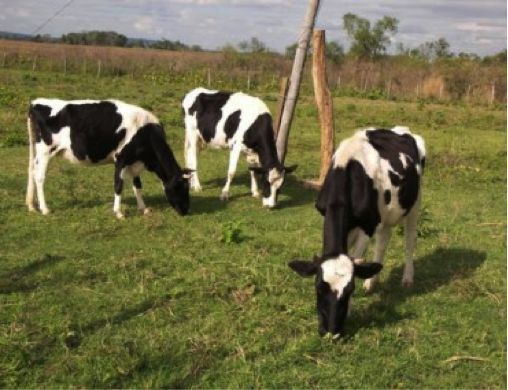 Source:www.caribbean-developments.com/dairy-industry-economic-growth-induveca/
Source:www.caribbean-developments.com/dairy-industry-economic-growth-induveca/
ii. Small Food Animals - Muscovy ducks
iii. Dual or multi-purpose animals - goats
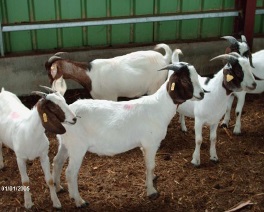
b. Companion and Recreational Animals
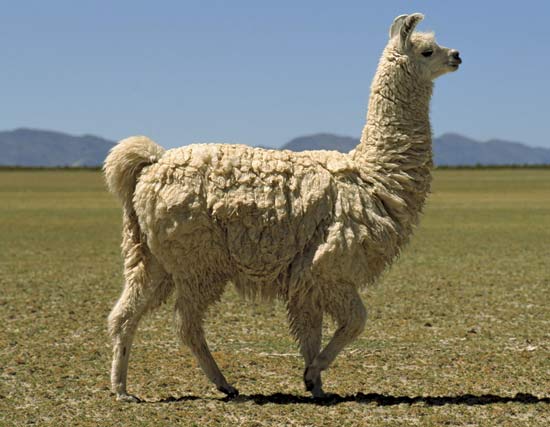 Source: http://media.web.britannica.com/eb-media/42/95642-004-D6B2D947.jpg
Source: http://media.web.britannica.com/eb-media/42/95642-004-D6B2D947.jpg
c. Laboratory Animals
Hamsters
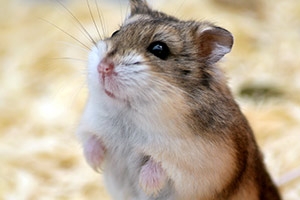 Source: https://www.aspca.org/pet-care/small-pet-care/hamster-care
Source: https://www.aspca.org/pet-care/small-pet-care/hamster-care
2. Animals with potential for domestication
a. Mammals - Red Brocket Deer
b. Birds - Cocrico
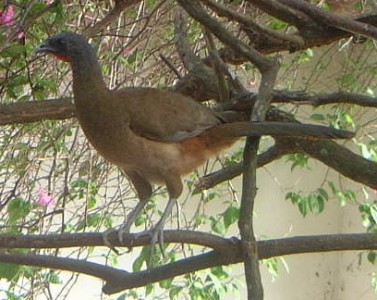 Source:http://www.redorbit.com/education/reference_library/ animal_kingdom/aves_birds/2580284/rufousvented_
Source:http://www.redorbit.com/education/reference_library/ animal_kingdom/aves_birds/2580284/rufousvented_
chachalaca/
c. Reptiles - Snakes
3. Zoo Wild Animals
Zebra at the Vienna Zoo
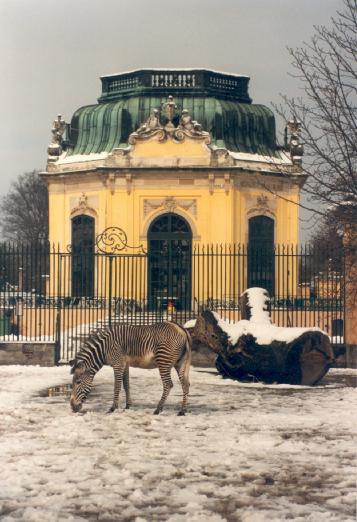
Video Aid: Mono-gastric vs. mono-gastric hindgut fermenter vs. ruminant digestive system

The University of Waikato
Lecture: Animal Structure & Function - The Digestive System
Intensive rearing of ruminants in the French Caribbean
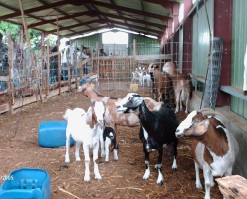
Visual Aid: A case study in Grenada - The Goat Dairy project established after Hurricane Ivan in 2004 destroyed their main agricultural crop, nutmeg.
